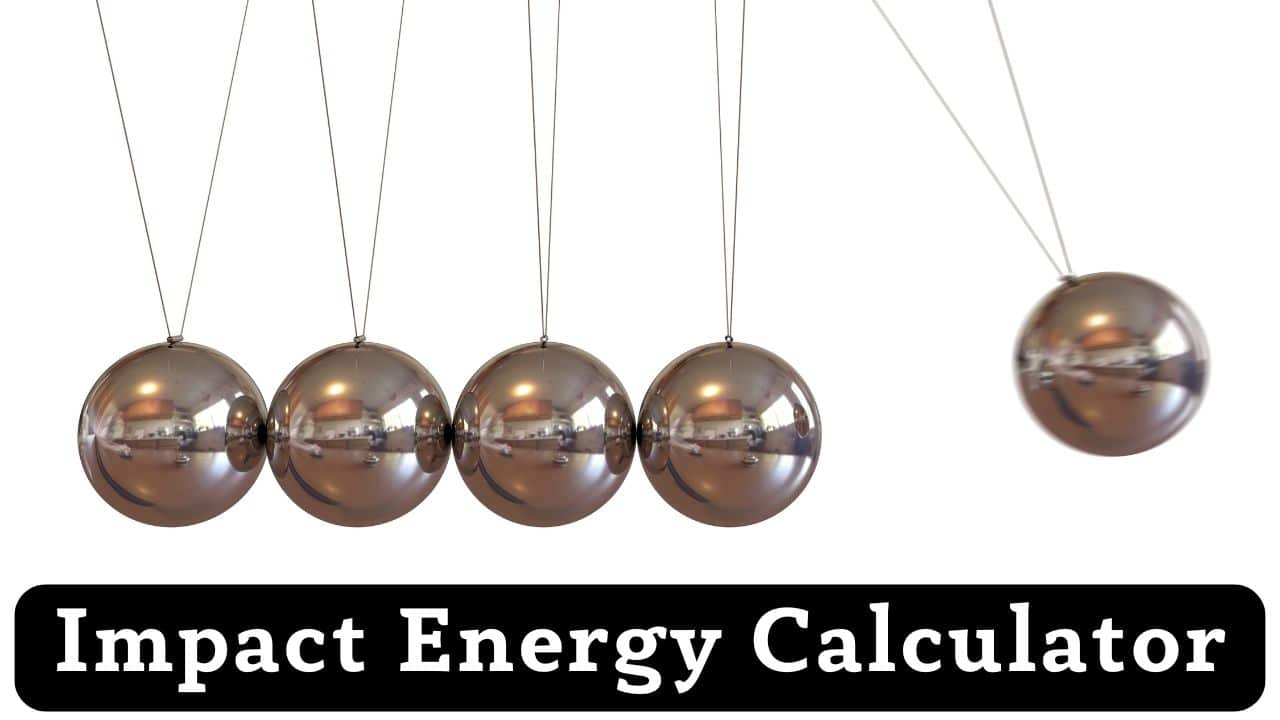
Understand Impact Energy
Master the fundamentals of impact mechanics, collision dynamics, and energy transfer in impact scenarios!
What is Impact Energy and Why Does it Matter?
Impact Energy is the kinetic energy possessed by an object at the moment of collision or impact. Understanding impact energy principles is crucial for safety engineering, material testing, automotive design, and structural analysis where objects collide or experience sudden deceleration.
Why impact energy matters: Impact energy determines the severity of collisions, the damage potential in accidents, and the energy absorption requirements for protective systems. It’s fundamental to crash testing, ballistic analysis, and material characterization.
Real-World Applications:
- Automotive Safety: Crash testing, airbag deployment, crumple zone design
- Material Testing: Charpy and Izod impact tests for material toughness
- Sports Engineering: Ball impact analysis, protective equipment design
- Construction: Pile driving, demolition, impact-resistant structures
- Aerospace: Bird strike analysis, debris impact protection
- Manufacturing: Drop testing, quality control, packaging design
Key Impact Energy Concepts:
- Kinetic Energy: Energy of motion (KE = ½mv²)
- Momentum Conservation: Total momentum before = after collision
- Energy Dissipation: Energy absorbed during deformation
- Coefficient of Restitution: Measure of collision elasticity
- Impact Duration: Time over which collision occurs
- Stress Waves: Propagation of impact forces through materials
Fundamental Formulas and Relationships
The fundamental kinetic energy equation KE = ½mv² shows that impact energy increases quadratically with velocity. This relationship explains why small increases in speed result in dramatically higher impact energies and damage potential.
Typical Impact Energies by Scenario:
| Impact Scenario | Typical Energy Range | Velocity Range | Mass Range | Applications |
|---|---|---|---|---|
| Charpy Impact Test | 1 – 300 J | 5 – 6 m/s | 0.5 – 2 kg | Material toughness testing |
| Drop Test (Phone) | 0.5 – 2 J | 3 – 4 m/s | 0.1 – 0.2 kg | Consumer electronics |
| Car Crash (30 mph) | 200 – 500 kJ | 13 m/s | 1000 – 2000 kg | Automotive safety |
| Baseball Impact | 100 – 200 J | 40 – 45 m/s | 0.14 – 0.15 kg | Sports equipment |
| Bullet Impact | 500 – 4000 J | 300 – 1000 m/s | 0.002 – 0.05 kg | Ballistics, armor testing |
| Hammer Strike | 10 – 100 J | 5 – 15 m/s | 0.2 – 2 kg | Construction, manufacturing |
Practice Problems and Worked Solutions
Problem 1: Car Collision Impact Energy
Question: Calculate the kinetic energy of a 1500 kg car traveling at 60 km/h just before impact.
Click to see detailed solution
Given: m = 1500 kg, v = 60 km/h
Convert velocity: v = 60 km/h × (1000 m/km) × (1 h/3600 s) = 16.67 m/s
Formula: KE = ½mv²
Calculation: KE = ½ × 1500 × (16.67)² = ½ × 1500 × 277.8 = 208,350 J ≈ 208.4 kJ
Answer: The impact energy is 208.4 kJ
Safety note: This energy must be absorbed by crumple zones and safety systems
Problem 2: Drop Test Analysis
Question: A 0.15 kg smartphone is dropped from 1.5 m height. Find the impact velocity and energy.
Click to see detailed solution
Given: m = 0.15 kg, h = 1.5 m, g = 9.81 m/s²
Impact velocity: v = √(2gh) = √(2 × 9.81 × 1.5) = √29.43 = 5.42 m/s
Impact energy: KE = ½mv² = ½ × 0.15 × (5.42)² = 2.21 J
Alternative: PE = mgh = 0.15 × 9.81 × 1.5 = 2.21 J
Answer: Impact velocity = 5.42 m/s, Impact energy = 2.21 J
Design consideration: Phone cases must absorb this energy to prevent damage
Problem 3: Charpy Impact Test
Question: In a Charpy test, a 2 kg pendulum falls from 1.2 m to 0.3 m after breaking a specimen. Calculate absorbed energy.
Click to see detailed solution
Given: m = 2 kg, h₁ = 1.2 m, h₂ = 0.3 m, g = 9.81 m/s²
Initial energy: E₁ = mgh₁ = 2 × 9.81 × 1.2 = 23.54 J
Final energy: E₂ = mgh₂ = 2 × 9.81 × 0.3 = 5.89 J
Absorbed energy: E_absorbed = E₁ – E₂ = 23.54 – 5.89 = 17.65 J
Answer: The specimen absorbed 17.65 J of impact energy
Material property: This indicates the material’s toughness and impact resistance
